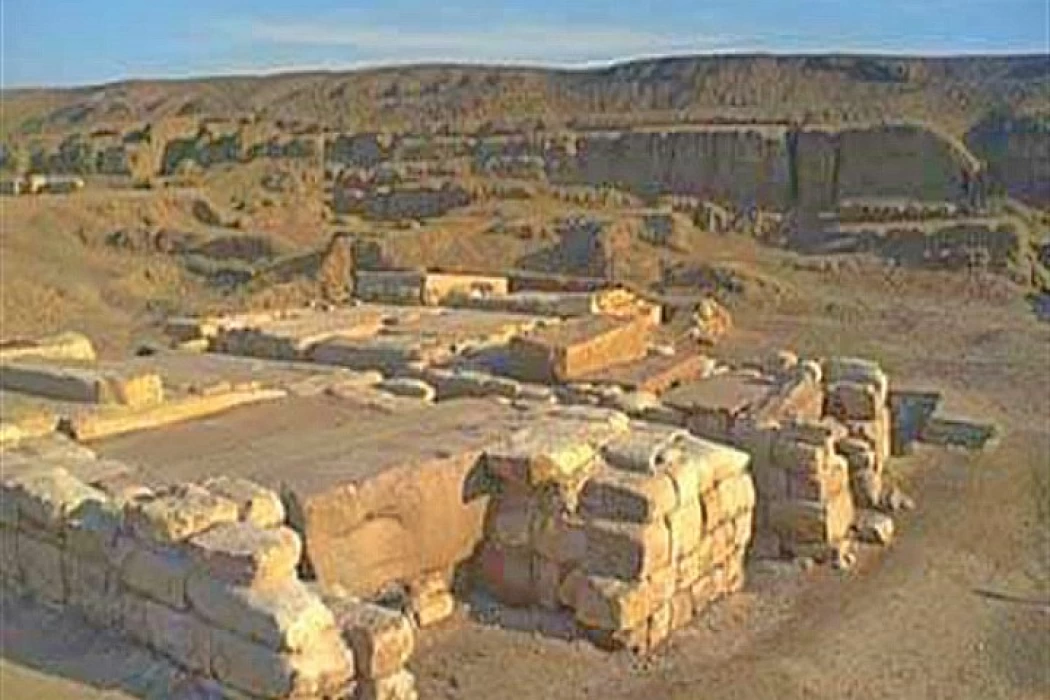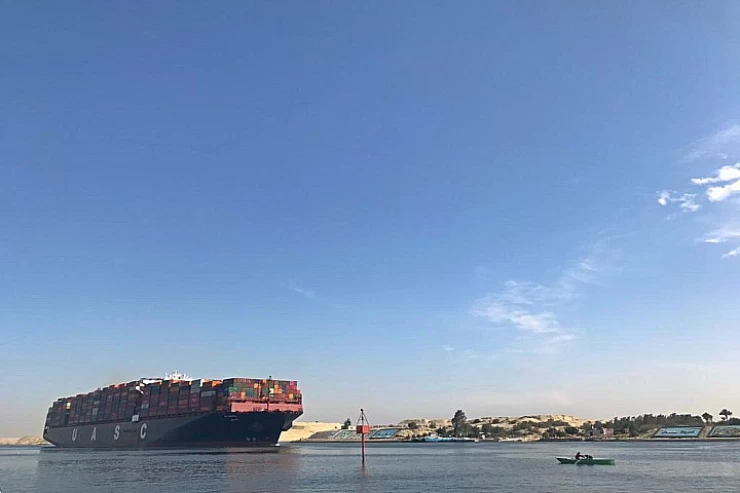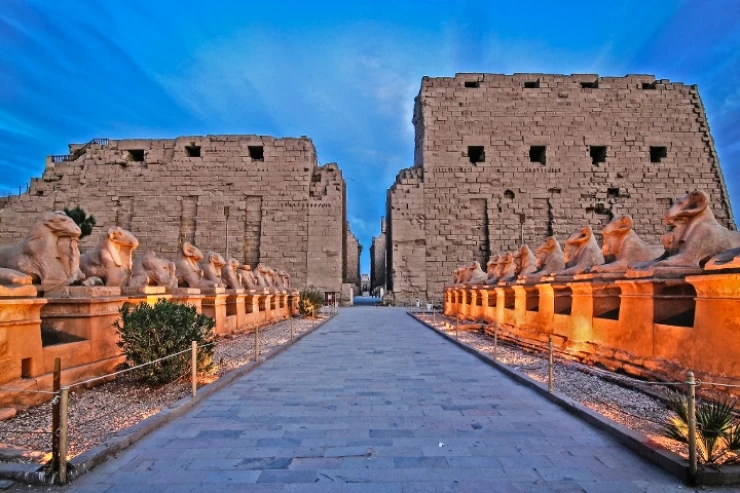
Bubastis: The Sacred City of Cats in Ancient Egypt
The ancient Egyptians respected the animals that shared their world, and even went so far as to sanctify and worship them, associating many of them with gods and positive human characteristics, and yet no animal in ancient Egypt enjoyed a sacred status as the ancient Egyptian cat did, as cats in ancient Egypt were closely associated with the gods.
Cat worship in ancient Egypt arose from the fact that Egypt was primarily an agricultural society, where the ancient Egyptians faced a clear issue with mice, rats, and snakes, which threatened grain stores and crops, and they knew that wild cats could eliminate these animal pests. They soon domesticated those cats that lived near human settlements in ancient Egypt, and indeed these cats helped them avoid predators and others in exchange for feeding and caring for them. Due to this symbiotic relationship, cats were welcome in homes and became friends with the ancient Egyptians.
For travelers seeking unique experiences, Egypt Travel Packages offer extensive insights into this captivating history and more.
During the New Kingdom era in Pharaonic Egypt, cats often appeared in the tombs of the human families that lived with them, and people in ancient Egypt depicted hunting trips with their cats on the walls. These drawings did not necessarily depict an ordinary hunting scene, as these scenes often referred to the idea of the triumph of order over chaos, where cats are depicted as restraining or controlling a wild bird, acting as a leader of order, as well as providing protection to family members.
Egypt Day Tours provide an up-close encounter with ancient Egyptian artifacts and sites, including locations where the reverence for animals is beautifully illustrated.
Particularly interesting is the discovery of inscriptions showing the status of cats in ancient Egypt in the tomb of Nab Amun in the Thebes necropolis, located on the west bank of the Nile River in ancient Thebes, Upper Egypt. There are decorations of a cat's eye set in gold (filled with pure gold) — the only part of the tomb that features this effect — which made the cat's eye seem alive and reinforced the sacred value of cats in ancient Egypt.
Egypt Shore Excursions allow travelers to explore unique cultural sites along the Nile, enriching their understanding of Egyptian history and the sacred role of animals in ancient times.
The ancient Egyptians did not distinguish between a wild cat and a domesticated cat, so they knew all cats as "miu" or "miut" — which translates to "that which meows." The most famous cat god among the ancient Egyptians was Bast or Bastet.
The city of Bubastis (the sacred city of cats in ancient Egypt) held a prominent role in this cultural reverence. Evidence from ancient Egyptian texts provided by European archaeologists during their long search for Bubastis — the sacred cat city of Bastet in ancient Egypt.
In the southeast of the modern-day Egyptian city of Zagazig, there are red granite ruins of an ancient sacred city that was for the cat goddess Bastet, who was worshiped thousands of years ago in ancient Egypt. Her popularity peaked during the 22nd Dynasty, and the pharaohs built a magnificent temple for her in the city.
This city is referred to in some holy books such as the Bible and is known by its Hebrew name Pi-beseth. However, it is described as a pagan shrine that will be destroyed by the wrath of God, while the city of cats is known by its Greek name Bubastis until today.
For thousands of years, this mysterious city captured the imagination of European archaeologists, especially in the 19th century, who flocked to Egypt's Nile Delta in search of it. Guided by intriguing hints from ancient stories and legends, they wanted to find the city of Bastet, discover its great temple, and try to understand how sacred cats played an important role throughout the long history of ancient Egypt.
One of the most important sources that talk about the sacred city of cats in ancient Egypt lies in one of the works of the famous historian Herodotus. In the fifth century BC, during a tour of Egypt, the Greek historian Herodotus visited the city of Bubastis and the temple of Bastet, describing it: “In this city there is a very good temple worth mentioning, because although there are other temples larger and more expensive to build, nothing pleases the eyes like this temple.”
Herodotus described the beauty of the holy city and the bustle that accompanied travelers to the city by boat for festivals, where they held celebrations and made offerings, and people consumed more wine at these celebrations than they consumed throughout the year.
In the eighteenth century, European researchers began searching for places mentioned in ancient texts, and for the French scholars who accompanied Napoleon on his 1798 expedition to Egypt, Herodotus' account served as inspiration to locate them.
One French scholar, Etienne-Louis Malus, spotted some of the qualities of the city in the Nile Delta region as mentioned by Herodotus, found ruins consistent with those ancient accounts, and declared that those ruins belonged to Bubastis, which is located northeast of Cairo, and then this site, known as Tel Basta, became the place that is widely believed to have once been the city of Bastet.
During a visit there in 1843, English archaeologist John Gardner Wilkinson lamented that Bubastis had been damaged and that traces of the temple had been excavated from among the stones. Eventually, an excavation was carried out by Swiss Egyptologist Edouard Henri Naville in 1887, and the excavations focused on studying the temple of Bastet.
The town of "Bubastis" is one of the largest ancient cities in Egypt. In modern times, Bubastis is situated in Sharkia province and is called by the locals "Tel Basta," or the great idol. It takes you about 2 hours to drive by a modern car to reach the Al Sharqia Governorate from Cairo through a newly paved road that connects the two provinces.
When you reach Sharkia, you will have to ask about the road to Zagazig City to reach your final destination and explore the monuments and what remains of the ancient city "Bubastis." The graceful cat goddess Bastet was the goddess of love and fertility. From the fourth dynasty onward, the Pharaohs of the seventeenth, eighteenth, and nineteenth dynasties and the twenty-second dynasty put their buildings and additions to the temple over 1700 years.
Tel Basta was the capital of the 18th region in the ancient Egyptian state. It became the capital of the whole country during the reign of the 22nd dynasty, and it has been named in the past "Basbastast" after the name of the goddess "Bastet," the goddess of fun, happiness, and comfort. The word was recently corrupted by Arabs to become "Tel Basta," which means the Mound of Bastet.
Among the most important monuments in the Tel Basta region are the great temple of the god Bastet and the monuments of the temple constructed by King Khufu or King Cheops, who built the great pyramid, and after him King Bebe, from the kings of the Sixth Dynasty and other kings of ancient Egypt and the Central State.
It includes monuments dating back to the Hyksos who occupied Egypt, until King Ramses the Second erected huge buildings in this city, with traces of King Osorkon II of the twenty-second dynasty kings.
















